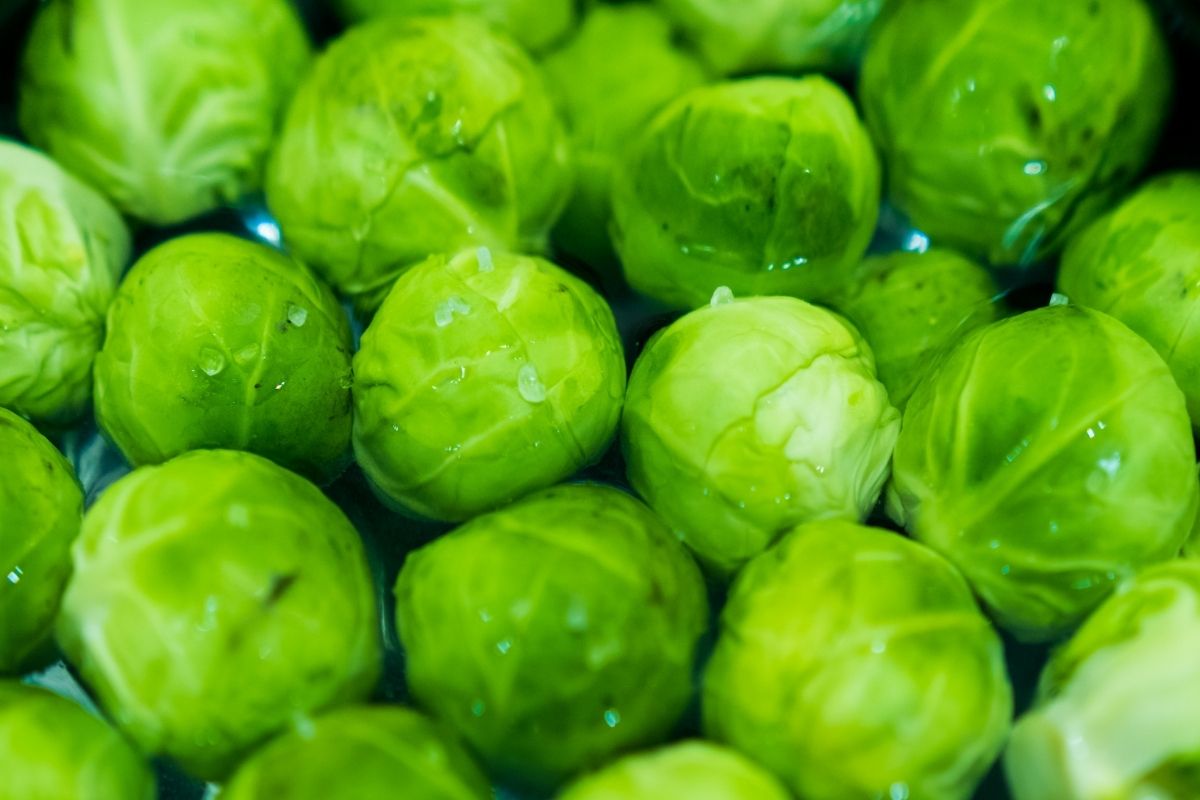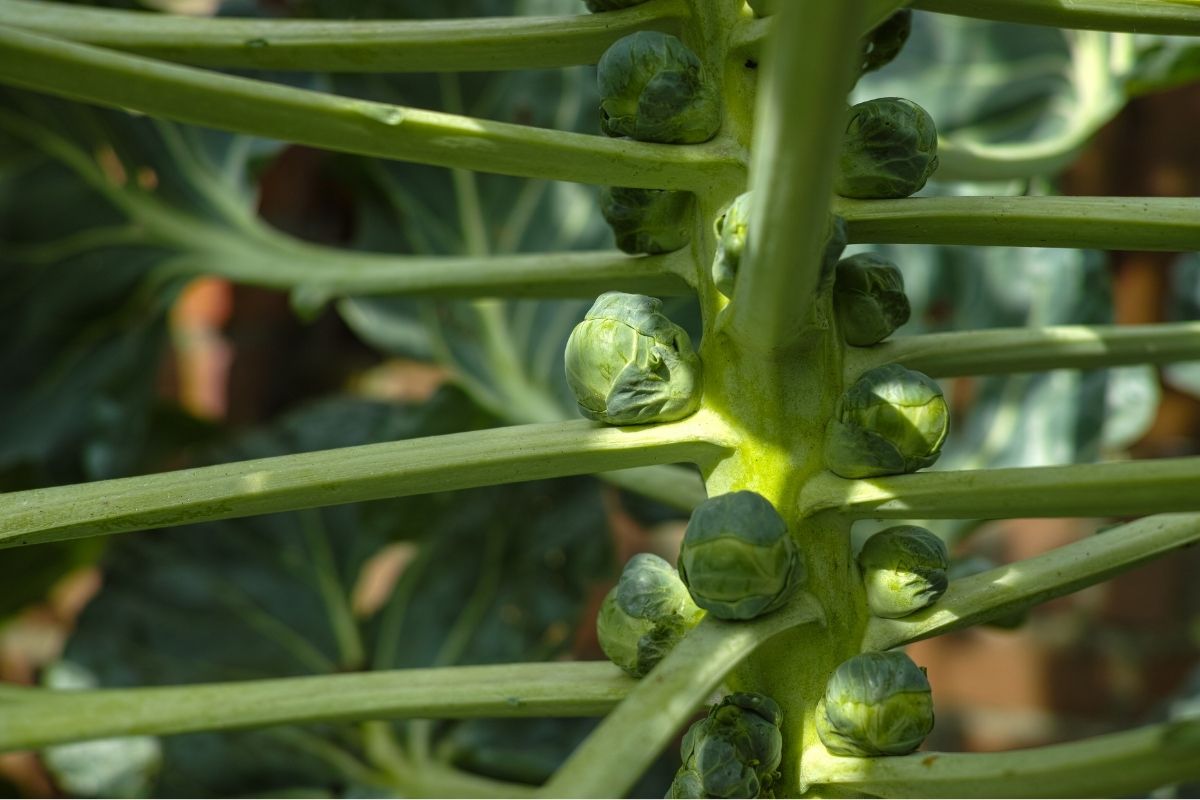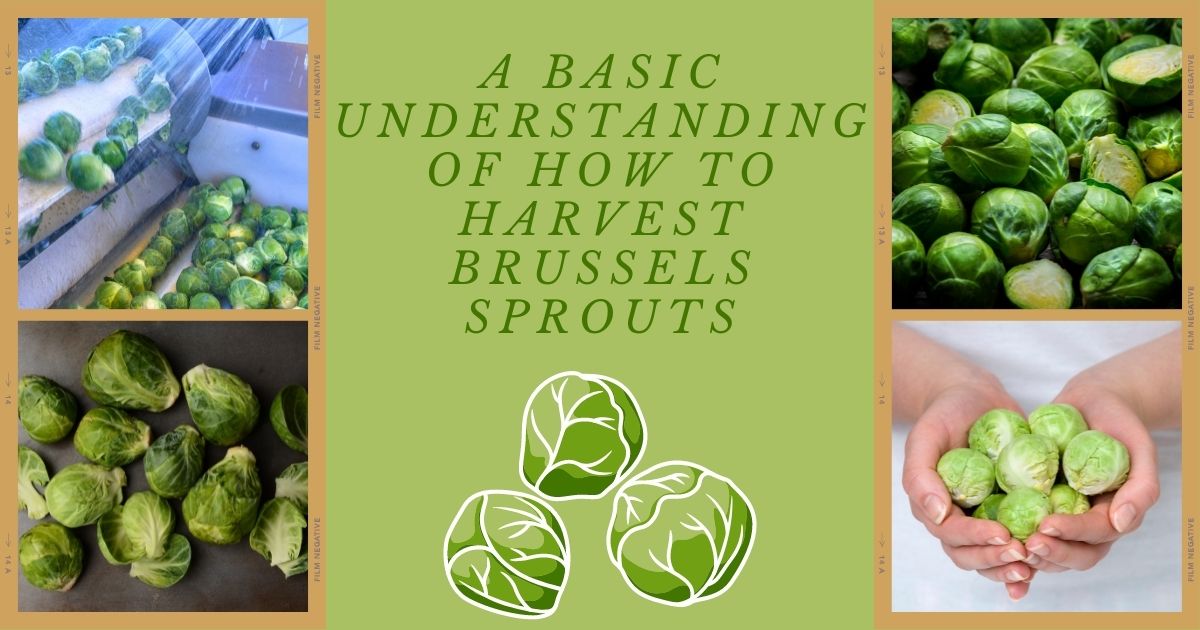When are Brussels Sprouts Ready to Harvest?
It is important to know how to harvest Brussels sprouts. The ideal time to harvest Brussels sprouts is when they are one inch (2.5 centimeters) in diameter. When Brussels sprouts reach maturity in cooler weather, harvesting is at its optimum.
Upper sprouts mature one to several days after lower sprouts, which mature earliest. The average hybrid variety requires up to 85 days for the node to mature.

How to Harvest Brussels Sprouts
Knowing when to harvest Brussels sprouts can enhance your experience’s flavor while providing a wholesome side dish for the meal. Learning when to pick Brussels sprouts is a rewarding undertaking, as it is with other vegetables. The lowest sprouts will be ready earliest since Brussels sprouts mature from the base of the plant upward.
When picking, start with the lower berries on the stalk and move higher. Cut the buds with a knife at the base, where the sprout joins the stem, or twist or snap them off. They will turn bitter and rough if you don’t pick them before they turn yellow.
Early harvests won’t have the same level of flavor as those that have experienced one or two sweetening frosts. A close-up vertical image with a soft-focus background shows a hand picking a mature Brussel sprout from the stem from the bottom of the frame.
You should clean up as you harvest if you didn’t top the plant or clip the lower leaves earlier. The plant will climb higher and continue to create new buds if you remove the lower leaves below the sprouts you select. Continue picking off the leaves beneath the sprouts as you gather them.
New ones will grow swiftly when you select them, but as the weather worsens, growth and the creation of new buds will slow. Growth will cease if you get a harsh freeze and persistently cold conditions.
Another option is to wait until a stalk is completely covered in grown-up sprouts before chopping it down at once. Cut the stem as close to the ground as you can, or firmly grab the top of the stalk and pull it out of the ground. Twist or chop off the individual sprouts after pulling the stem out of the ground, tossing any browning or rotting.
A close-up of two hands holding a harvested Brussels sprout stalk with fully developed buds against a dark, velvety background. Did you know you can also eat that fibrous stalks? Like cooking a broccoli stalk, you can prepare them by removing the woody outer covering. Add them to the pot the following time you create vegetable stock.
How to Grow Brussels Sprouts
Brussels sprouts, once derided, appear to be making a comeback in kitchens all around the country. Why not cultivate your own? How?
- Plant Brussels sprouts 6 to 10 weeks ahead of the anticipated first frost.
- Choose a location with abundant sunlight.
- Plant Brussels sprouts seedlings 18 to 24 inches (45.7 to 61 centimeters) or sow the seeds 3 to 4 inches (7.6 to 10.2 centimeters) apart.
- Give Brussels sprouts a constant supply of moisture.
- One month after planting, start fertilizing.
- Watch for cabbage worms and take quick action to treat them.
- When Brussels sprouts reach a diameter of 1 to 2 inches (2.5 to 5.1 centimeters), harvest them.
In the winter, Brussels sprouts have become the “it” food. Grandma’s tasteless and mushy Brussels sprouts are no more. Today’s chefs and home cooks are all about pan-frying or roasting the vegetables with bacon and garlic.
Although you can purchase Brussels sprouts at the supermarket, growing Brussel sprouts on your own are worth the extra space.

When to Plant Brussels Sprouts
We advise planting Brussels sprouts with a fall or winter harvest in mind because they require a long growing season. They thrive when allowed to reach maturity during the crisp autumnal days.
Using the “days to maturity” indicated on the seed packaging, count backward from the date of your first fall frost to find the best planting period. This often entails planting Brussels sprout seeds four months before the first fall frost date.
Start seeds early to mid-summer in areas with chilly winters where winter temperatures are frequently below freezing. The plants will be ready for mid-fall or early-winter harvest.
Plant seeds in the middle to end of the summer in areas with mild or warm winters, where temperatures are only sometimes or infrequently below freezing. Read our article and find out What Temperature Is Too Cold For Plants?
For a mid to late-winter harvest, the plants will be ready. You can plant Brussels sprouts directly in the garden or cultivate them from seed indoors. We advise beginning seeds indoors to give seedlings a head start and protect them from the summer heat and pests.
If you intend to sow seeds outdoors, add 20 days to your planting date estimate because direct-sown seeds may take a few weeks to mature.
How Tall do Brussels Sprouts Grow?
Brussels sprout plants may need staking as they often grow to two to three feet (0.6 to 0.9 meters). To direct plant energy toward healthy growth and let more sunlight reach the stem, remove the yellow leaves near the plant’s base.
Storing Brussels Sprouts After Harvest
Storage conditions for Brussels sprouts should be 32 to 40 degrees Fahrenheit (0 to 4 degrees Celsius) with 95% relative humidity. Storage in the cold and moisture is difficult. In addition to providing cold, refrigerators also dry the air.
In the refrigerator, place sprouts in a perforated plastic bag, unwashed, and wrapped in a damp towel. It’s ideal for storing nodes in the fridge for three to five weeks. If you’re storing the whole stalk, wrap the stub in a wet paper towel.
You can dig up some of the plants in regions with extremely harsh winters and move them into a cold frame or containers in a cool garage or basement. These plants can produce sprouts for several months.
The leaves of the Brussels sprout plant are edible. Still, since they are thicker and more difficult to chew than cabbage, it is advisable to slice and steam them before using them.
What Does a Brussels Sprout Plant Look Like?
What does a Brussels sprout plant appear like at the beginning of its growth? The Brussels sprouts will start roughly 50 days after planting. The sprouts, like little cabbages, develop at the leaf axil, where each leaf connects to the central stalk. The earliest nodes will appear around the plant’s base, moving up the trunk.
Large leaves on long stalks form as plants ascend. On the central stem, buds begin to form first around the base of the plant and continue to do so until they reach the top.
Where Do Brussels Sprouts Come From?
According to ideas, Brussels originated from Belgium, whence it acquired its name. Records date them to the 13th century in and around Brussels. In the 18th century, the French invented the name.
The French introduced Louisiana to Britain in 1800. The US growers are in New York and California. The Sprouts grow in the Netherlands and other European nations. Many think Brussels sprouts have a relation with Mediterranean kale. The nodes need a long, chilly soak.
They prefer a mild frost during the growing season. Each stalk of a sprout can yield up to 15-20 sprouts. The plant might develop two to three feet (0.6 to 0.9 meters) in height during the summer if you keep them cool.
You must collect sprouts while still brilliant green and before they begin to turn brown yellow.
The leafy greens are rich in fiber, calcium, potassium, vitamin C, and A. Brussels sprouts have a sulfur flavor when overcooked. You can store fresh Sprouts in the fridge for about a week.

Is Pruning Brussel Sprouts Necessary?
You’ll have more sprouts to roast, sauté, and prepare by lightly pruning Brussels sprout plants, promoting robust growth and future sprout development. When you notice at least one node developing, start pruning Brussels sprouts. Use hand pruners to remove the bottom six to eight leaves at this time.
The primary vertical stem should be as close to the incision as is practical. Throughout the growing season, maintain pruning two or three lower leaves per week while retaining a few large, healthy above leaves to feed the plant. Stop removing any lower leaves three weeks before you plan to harvest the sprouts.
With the pruners, trim 1 to 2 inches (2.5 to 5 centimeters) (straight across the stem above a leaf) from the topmost vertical stalk. This is the best approach to pruning Brussels sprouts to force the plant to mature all at once. Commercial producers employ this pruning technique to help them bring their produce to market.
Of course, trimming or pruning the plant is optional, but it can result in a longer harvest with stronger sprouts. You can always pull sprouts off the plant as soon as they grow big enough by gently twisting them until they separate from the plant.
